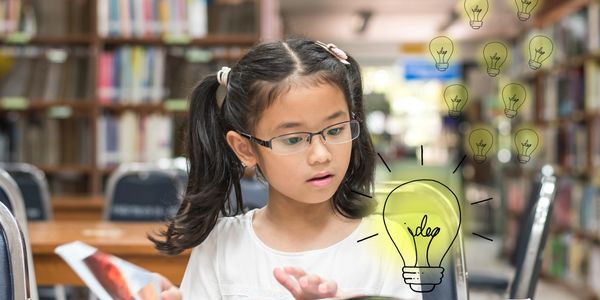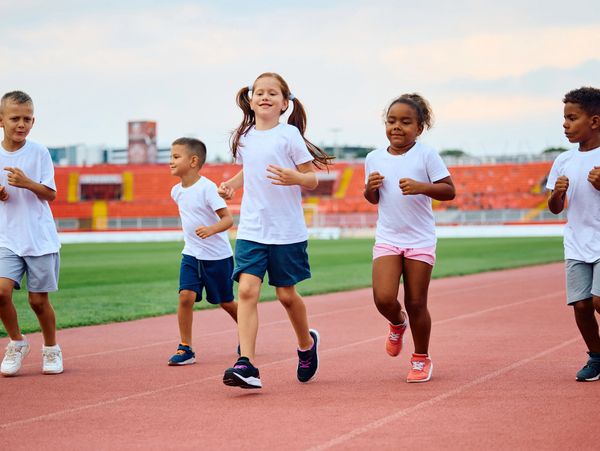Cross-curricular math.

Math & Art
By drawing pictures that naturally form patterns like symmetry or repeating shapes, children will start to understand basic math ideas without even realising it.
Explore concepts like ratios and proportions through painting, building with blocks, or drawing geometric patterns and children will see numbers and shapes come alive right before their eyes. This mix helps turn abstract math into something they can see and touch, making it easier to learn and remember.
In short, combining art and math in everyday activities can spark curiosity and creativity that lasts a lifetime.

Math & Baking/Cooking
Math plays a crucial role in the kitchen, from basic arithmetic to more complex concepts like ratios and conversions. It's essential for measuring ingredients, adjusting recipes and even managing food costs.

Math & History
History isn’t just about remembering dates and events—it’s about understanding patterns, analysing real-world impacts and seeing connections across time. Integrating mathematics into history lessons helps students develop essential problem-solving skills, encourages critical thinking and brings historical events to life in a way that feels practical and engaging.

Math through story
Using stories to teach maths can be a wonderful way to engage young children while sparking their imagination. From an early age, children are drawn to books. At first they can enjoy the illustrations, and later, explore the characters and storylines. Through these imaginative tales, you can introduce mathematical ideas, showing how maths relates to everyday life. They help children see how numbers, measurements and shapes are used in real-life scenarios, laying a strong foundation for understanding more abstract concepts in later learning. Even by asking a few maths-related questions while reading, such as counting or pointing out shapes, you can foster a child’s enthusiasm and understanding in a fun and exciting way.

Math & Music
Incorporating music into math lessons can make learning more engaging and relatable, potentially improving student performance in both subjects.
Mathematical Concepts in Music:
Counting & Sequencing: Beats, melodies, and note patterns all rely on counting and understanding how notes relate in scales and chords.
Fractions & Ratios: Music is full of fractions—like in a 4/4 time signature, where a whole note lasts four beats.
Patterns & Symmetry: Songs often follow repeating structures, like the AABA format, and musical elements like octaves show off symmetry in sound.
Bringing music into math lessons isn’t just fun—it’s a great way to see numbers and patterns in action.

Math & Geography
Combining maths with geography serves as a powerful tool for understanding and analysing the world around us.
Numbers are essential for measurements, such as calculating temperatures, percentages, distances or river flows, which provide critical insights into physical and environmental processes.
Coordinates, like grid references or latitude and longitude, allow for precise spatial positioning and mapping.
Comparative data, including ratios like population density, enable comparisons between regions or countries.
Numeric data, such as rainfall totals or population figures, add a sense of scale and importance to geographic phenomena. Bringing math into geography lessons equips students with practical skills, making data-driven exploration more meaningful. Would you like some lesson ideas or activities to support this topic?

Math & Sport
Whether they're keeping score for a game, timing each half or calculating which angle the player should hit the ball to score – math is key in sports. There are some simple ways to teach math through sports.
Practical Applications: Math is used in many sports for practical purposes, such as keeping score, measuring distances and recording times.
Data Analysis: Sports involve collecting and analyzing data, such as player statistics, running times or game outcomes. Students can learn how to use data tables, graphs and calculations to interpret this information and draw conclusions.
Geometry and Spatial Reasoning: Understanding shapes, angles and spatial relationships is important in sports. For example, learning about different team formations and how they relate to geometric shapes can be helpful in football.
By incorporating maths into sports lessons, students can develop a deeper understanding of both subjects and see the real-world applications of mathematics.

Math & Nature
There are many benefits to Integrating math and nature in schools. It can involve numerous activities from using natural materials as manipulatives to exploring mathematical concepts in outdoor settings. Activities like measurement, pattern recognition and data collection can help students develop important mathematical skills in a more concrete and engaging way, particularly in the early years of primary school.